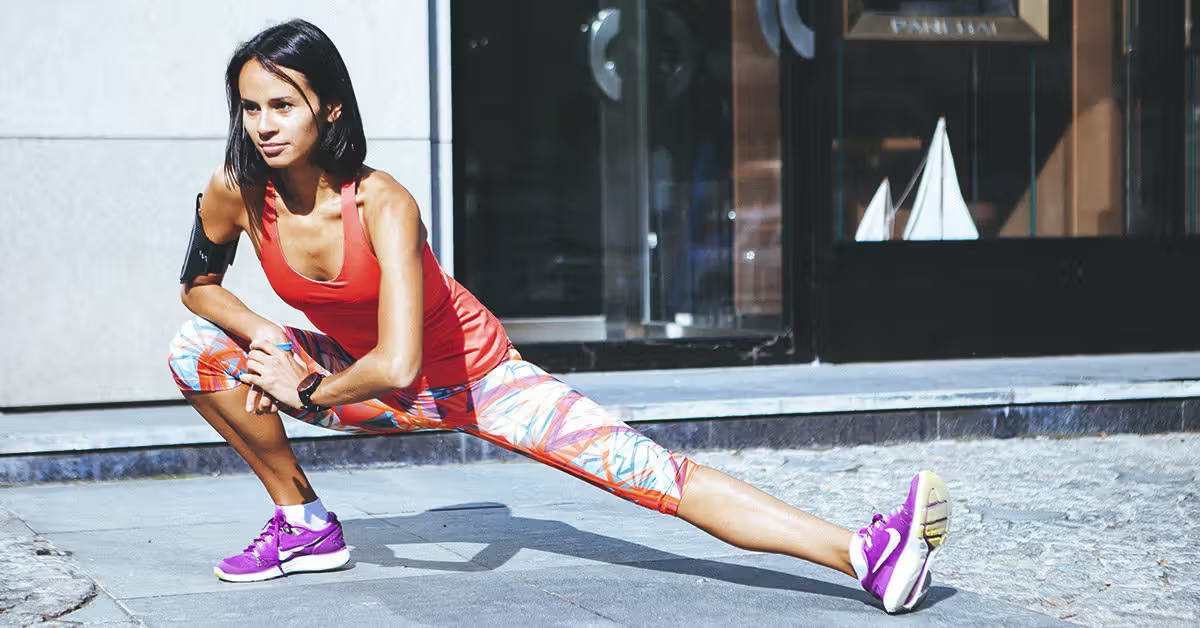When it comes to fitness and overall well-being, many of us tend to focus on the upper body—arms, chest, and back. But what about our thighs and legs? These powerhouse muscles play a crucial role in everything we do, from walking to running to squatting. Neglecting them can lead not only to diminished performance but also potential injuries down the line.
Thigh care and leg care are often overlooked components of a balanced fitness routine. They deserve just as much attention as any other part of your body. Whether you’re an athlete looking for that competitive edge or simply someone seeking everyday strength and flexibility, understanding how to properly care for your legs is essential.
In this guide, we’ll explore why flexibility routines are vital for maintaining healthy thigh muscles while building leg strength through effective exercises. Get ready to unlock new levels of mobility and power—your legs will thank you!
The Importance of Flexibility and Strength in the Thighs and Legs
Flexibility and strength in the thighs and legs play a vital role in our overall physical performance. Flexible muscles allow for a greater range of motion, enhancing athletic abilities and daily movements. When your thighs are limber, you can run faster, jump higher, and move with ease.
On the other hand, strength is equally crucial. Strong thigh muscles support your body during activities like walking, squatting, or climbing stairs. They help stabilize your joints and prevent injuries.
Balancing both flexibility routines and strength training creates a solid foundation for any fitness regimen. By focusing on these aspects simultaneously, you not only improve endurance but also promote better posture. This combination reduces strain during workouts and everyday tasks alike.
Moreover, strong yet flexible thighs contribute to improved balance and coordination. Engaging in targeted leg exercises enhances muscle care while reducing fatigue over time.
Common Injuries in the Thighs and Legs
Thigh and leg injuries are all too common, especially among active individuals. Strains often occur when muscles are stretched beyond their limits during intense activities. This can lead to sharp pain and swelling.
Another frequent issue is tendonitis, which results from repetitive stress on tendons in the thigh area. It can cause discomfort and hinder movement, making daily tasks challenging.
Knee injuries like ligament tears or patellar issues also affect many people. They often stem from improper techniques in sports or physical activities.
Shin splints are another concern for runners and dancers alike. The pain usually radiates along the shin bone due to overuse or sudden increases in activity levels.
Understanding these common injuries helps highlight the importance of proper care routines focused on flexibility training and strength-building exercises.
Best Exercises for Improving Flexibility in the Thighs and Legs
Static stretches are a cornerstone of thigh flexibility. Simple moves like the seated hamstring stretch can greatly enhance your range of motion. Just sit on the floor, extend one leg, and reach for your toes. Hold that position to feel the gentle pull.
Dynamic stretches get your blood flowing and prepare your muscles for action. Leg swings are fantastic here—stand next to a wall, swing one leg forward and back while keeping it straight. This not only warms up the thighs but also engages hip flexors.
Yoga poses provide another excellent avenue for improving flexibility in both thighs and legs. The pigeon pose is particularly effective; it opens up tight hips while stretching out the glutes and outer thighs. Integrate these exercises into your fitness routines regularly for optimal results in muscle care and overall mobility.
A. Static Stretches
Static stretches are a fundamental component of any thigh and leg care routine. They help in elongating the muscles, improving flexibility, and enhancing overall mobility.
To perform static stretches effectively, hold each position for about 15 to 30 seconds. This allows your muscles to relax and lengthen properly.
For targeting the thighs specifically, consider doing a seated forward fold or standing quadriceps stretch. These movements focus on key muscle groups while promoting relaxation.
Incorporate these stretches into your post-workout regimen or as part of your morning routine. The benefits are substantial; not only do they aid in recovery, but they also contribute to better performance in leg exercises.
Remember to breathe deeply during each stretch. This helps release tension and increases the effectiveness of your stretching exercises. Regular practice can lead to significant gains in thigh flexibility over time.
B. Dynamic Stretches
Dynamic stretches are a fantastic way to warm up your thighs and legs before any workout. These movements prepare your muscles for action, enhancing both flexibility and performance.
Start with leg swings. Stand next to a wall for balance and swing one leg forward and backward in a controlled manner. This exercise helps loosen the hip joints while engaging your thigh muscles.
Walking lunges are another great dynamic stretch. Step forward into a lunge position, keeping your front knee aligned with your ankle. Alternate legs as you move forward, which activates key muscle groups throughout the lower body.
Remember high knees? This popular drill not only warms up the thighs but also elevates heart rate. As you jog in place, lift each knee toward your chest rapidly—perfect for promoting blood flow.
Incorporating these dynamic stretches into fitness routines can significantly improve overall leg strength and flexibility over time.
C. Yoga Poses
Yoga poses are a fantastic way to enhance thigh flexibility and leg strength. They focus not just on stretching but also on controlled muscle engagement.
One key pose is the Warrior II. It stretches the inner thighs while building stability and endurance in your legs. Hold this position for several breaths to feel the benefits deepen.
Another effective pose is the Pigeon Pose, which targets tight hip flexors and glutes. This gentle stretch can help alleviate tension in those areas, promoting better mobility overall.
Don’t forget about Downward Dog. This classic pose elongates your hamstrings and calves while strengthening your core as well. The combined benefits support both flexibility routines and strength training efforts.
Incorporating these yoga poses into your fitness routine can provide a balanced approach to muscle care, enhancing both flexibility and leg strength over time.
Best Exercises for Building Strength in the Thighs and Legs
Building strength in your thighs and legs is essential for overall fitness. One of the best exercises to achieve this is squats. They engage multiple muscle groups, including quads, hamstrings, and glutes.
To perform a squat correctly, stand with your feet shoulder-width apart. Lower your body as if sitting back into a chair while keeping your chest up. Aim for at least 90 degrees at the knees.
Lunges are another fantastic option. Step forward with one leg, bending both knees until they form right angles. This exercise not only builds strength but also enhances balance.
Deadlifts can be highly effective too. With proper form, lift weights from the ground by hinging at your hips and straightening up through your legs.
Don’t forget about resistance bands; incorporating them into leg lifts or side steps can add variety while targeting different muscle fibers effectively.
A. Squats
Squats are a cornerstone of any effective thigh and leg care routine. They target multiple muscle groups, including the quadriceps, hamstrings, glutes, and calves. This exercise is not only effective for building strength; it also enhances stability in your lower body.
To perform a squat correctly: Stand with your feet shoulder-width apart. Keep your chest upright and core engaged as you bend your knees to lower yourself down as if sitting back into an imaginary chair. Aim to keep your weight on your heels while pushing through them to return to the standing position.
Variations such as goblet squats or sumo squats can add diversity to your workouts while targeting different areas of the legs. Incorporating squats into regular fitness routines promotes muscle care by improving overall leg strength and flexibility.
By prioritizing both flexibility routines and strength training exercises like squats, you’re setting yourself up for success in maintaining well-cared-for thighs and legs that can support all aspects of daily life—whether it’s running errands or engaging in sports activities. Remember that consistency is key when establishing any new workout habit!






